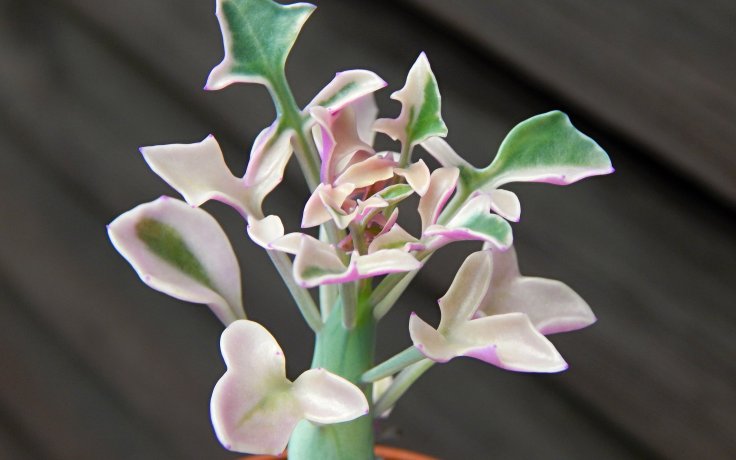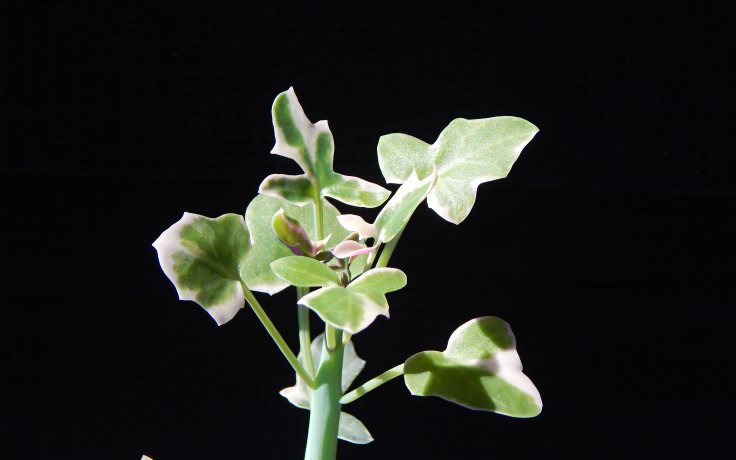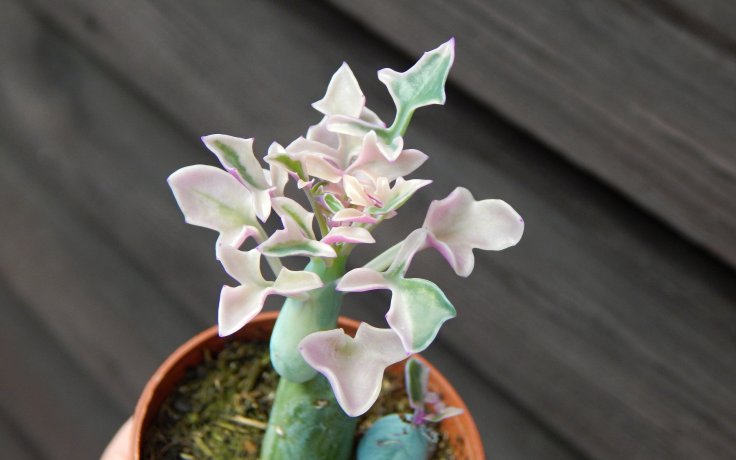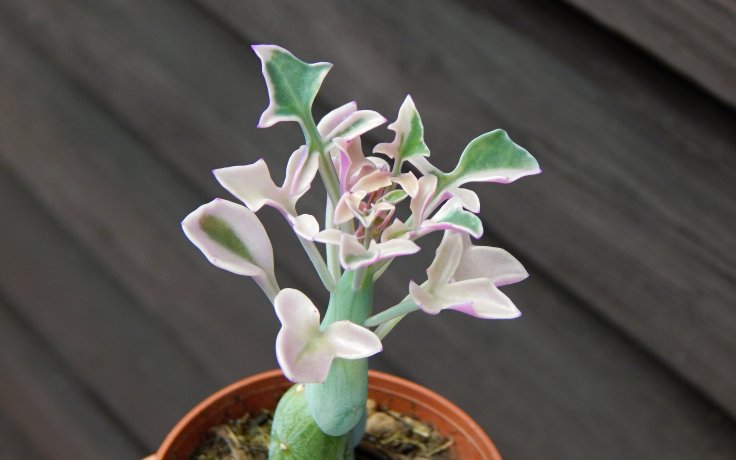- Home
- Succulents
- Senecio
- Senecio articulatus variegata





Senecio articulatus variegata
Place ideally in partial shade.
The plant has a reverse growth cycle. Therefore, water adequately through the winter and reduce watering in the summer.
It can tolerate -3.9 °C in the short term. However, the plant is not hardy.
This is an eye-catching succulent. A striking plant with leaves that are purple underneath and a pattern of creamy white, purple and green on top is sure to catch the eye of many people.
Senecio articulatus variegata, also called Curio articulatus Candlelight, Senecio articulatus Candlelight or Candle Plant, was first described by Gordon Rowley (1921-2019) as Senecio articulatus Candlelight. It is a variegated form and the classic, green one comes from South Africa.
The green leaves turn creamy white or purple tones underneath and along the edges and grow at the tops of the stems. The leaves may fall off naturally during the year and the plant may grow for several months without them. It then resembles a candle, which is how it earned its nickname. After some time, the leaves will naturally grow back on their own. The sausage-shaped stems are grey-green in colour and show a small, purplish-grey pattern. Individual fleshy stem segments grow up to 10 cm long and 2 cm across.
White flowers rarely appear in small clusters, usually over winter.
It has a reverse growth cycle. This means that the period of full growth begins in autumn, ends during spring, and over the summer there is a period of dormancy, the plant naturally loses its leaves and watering must be reduced. The plant's body is slightly toxic, so try to keep it away from pets and small children. Senecio articulatus variegata is a striking plant to look at, with its geometric sparseness, but it also catches the eye among other striking plants.